The Dental Admission Test (DAT) is a multiple-choice standardized exam taken by potential dental school students in the United States.
Here are dental schools ranked by DAT score from the 2010 ADEA Official Guide to Dental Schools.
Dental School Rankings (Academic Average)
Columbia 21.7
UCLA 21
Harvard 21
Stony Brook 21
Alabama 20
UCSF 20
UoP 20
Connecticut 20
New York 20
Pennsylvania 20
Minnesota 19.63
Nova 19.58
Maryland 19.5
New Jersey 19.45
Buffalo 19.42
Pittsburgh 19.4
Washington 19.39
Boston University 19.35
Temple 19.3
Houston 19.15
Louisiana State 19.1
Illinois at Chicago 19.1
UNLV 19.01
USC 19
Colorado Denver 19
Florida 19
Iowa 19
Kentucky 19
Tufts 19
Detroit Mercy 19
Michigan 19
Chapel Hill 19
Case 19
Ohio State 19
Oklahoma 19
Baylor 19
San Antonio 19
Virginia Commonwealth 19
Indiana 19
Loma Linda 18.79
Oregon 18.71
Southern Illinois 18.6
Midwestern 18.5
Creighton 18.48
Missouri - Kansas City 18.02
Western U. 18
Georgia 18
Louisville 18
Mississippi 18
Nebraska 18
South Carolina 18
Tennessee 18
Marquette 18
Arizona 17.84
Howard 17.7
West Virginia 17
Puerto Rico 16
Meharry 16

By Serena Gordon
HealthDay Reporter
HealthDay Reporter
FRIDAY, May 18 (HealthDay News) -- If you've been to the dentist with your children recently, you may have noticed that things have changed since you were a kid.
Many dental offices are more kid-friendly these days, offering books and toys to pass the time in the waiting room and maybe even TV or videos to watch while they're getting dental work.
But, there have also been changes in the actual practice of children's dentistry. You probably never got dental sealants as a child, or had topical fluoride treatments. If you had your wisdom teeth removed, more than likely it was because they were causing a problem, but today those teeth may come out sooner to reduce the risk for complications.
Here's a sampling of what's new in pediatric dentistry:
Dental Sealants
Many teeth have rough surfaces that are hard to clean. When applied to these surfaces, a dental sealant makes the pitted and grooved area of a tooth smooth and easy to clean.
"Back teeth have a biting surface and crevices that are hard to clean," said Dr. Larry Kronenberg, a pediatric dentist affiliated with Northern Westchester Hospital in Mount Kisco, N.Y. "Depending on the depth of the crevice, bacteria and food can get lodged in the tooth and cause cavities."
"If your child has shallow crevices, sealants probably aren't indicated," he said. "But if you've ever given your child a pretzel and later saw that the food was still stuck on the teeth, your child could benefit from sealants."
Sealants are easy to apply. The dentist brushes them onto the teeth, and the sealant bonds with the tooth's enamel, according to the American Dental Association (ADA). Sometimes a curing light is used to help the sealants dry faster.
Fluoride Treatments
"Ingested fluoride works on teeth that haven't yet come into the mouth, those that haven't erupted yet, but it has no effect on the teeth already in the mouth," Kronenberg said. "A fluoride treatment using a gel or varnish incorporates the fluoride into the surface outer layer of the tooth. It has to be repeated because it gets worn off."
Fluoride is applied using a cotton swab or brush, or it's placed in a tray that the child bites down on and then holds in the mouth for several minutes. Once a fluoride treatment is done, there should be no eating or drinking for 30 minutes to allow the fluoride to soak into the teeth, according to the ADA.
Kronenberg explained that the difference between the fluoride contained in toothpaste and fluoride treatments is the concentration. The fluoride in toothpaste is much less concentrated, he noted.
Wisdom Teeth
Should they stay or should they go? That's the question kids and parents face.
Kronenberg said that most dentists start to look at a kid's wisdom teeth at about age 16 or 17 to see if there's room for the teeth to come in properly, without causing problems. If a tooth looks like it won't come in properly, some dentists now suggest removing these teeth sooner rather than later to make the removal easier. The less chance the tooth has to develop, the shallower the roots will be, explained Kronenberg.
But not everyone is practicing early removal.
"There's no cut-and-dried protocol saying that all wisdom teeth have to be extracted," said Dr. Joshua Verona from the division of dental medicine at Beth Israel Medical Center in New York City. "If they don't affect function or appearance, we just leave them in. We only extract wisdom teeth when they're symptomatic."
Parents should discuss with their family dentist the risks and benefits associated with leaving wisdom teeth in or taking them out.
Reducing Anxiety
Kronenberg said that pediatric dentists are seeing patients at a younger and younger age. Some recommend that well-dental visits, much like well-child visits at the pediatrician, start at age 1 so that dentists can discuss the importance of diet and oral hygiene with the parents. But more importantly, he said, early visits "help start a relationship between the child and the dentist at an early age, and generally if you've built a positive relationship, children are more willing to accept necessary treatments in the future."
More information
The Nemours Foundation KidsHealth website has more on good oral hygiene.
A companion article recounts changes in pediatric dentistry from one generation to the next.
Copyright © 2012 HealthDay. All rights reserved.
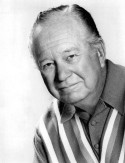
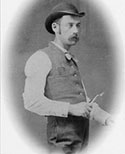 • John Henry “Doc” Holliday: You may remember Doc Holliday for his friendship with Wyatt Earp and their famous gunfight at the O.K. Corral, but Holliday was actually a dentist who was trained in Pennsylvania and developed a booming little practice in Atlanta. After a short time, Holliday contracted tuberculosis and he was forced to leave his practice and move out West, where the rest is, well…history.
• John Henry “Doc” Holliday: You may remember Doc Holliday for his friendship with Wyatt Earp and their famous gunfight at the O.K. Corral, but Holliday was actually a dentist who was trained in Pennsylvania and developed a booming little practice in Atlanta. After a short time, Holliday contracted tuberculosis and he was forced to leave his practice and move out West, where the rest is, well…history.
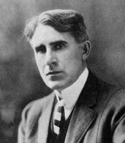 • Zane Grey: If you’re a fan of Western novels, then you’re no stranger to the name Zane Grey. Before writing over 80 books, Pearl Zane Grey was a practicing dentist in New York. Unfortunately, his love for dentistry decayed and he quickly abandoned the field when he became a published author. The lackluster Pearl went on to be one of history’s first millionaire authors. We can only hope none of his patients ever felt pangs while at the dental clinic as he did.
• Zane Grey: If you’re a fan of Western novels, then you’re no stranger to the name Zane Grey. Before writing over 80 books, Pearl Zane Grey was a practicing dentist in New York. Unfortunately, his love for dentistry decayed and he quickly abandoned the field when he became a published author. The lackluster Pearl went on to be one of history’s first millionaire authors. We can only hope none of his patients ever felt pangs while at the dental clinic as he did.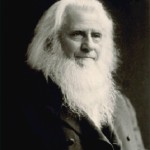
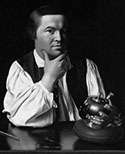 • Paul Revere: This famous Revolutionary War hero made a midnight ride just before the battles of Concord and Lexington to warn people that, “The British are coming! The British are coming!” If he were advertising his day job, he might just as easily called out, “The dentist is coming! The dentist is coming!” Revere was a skilled silversmith who also advertised his services as a dentist and was known for making false teeth for his patients.
• Paul Revere: This famous Revolutionary War hero made a midnight ride just before the battles of Concord and Lexington to warn people that, “The British are coming! The British are coming!” If he were advertising his day job, he might just as easily called out, “The dentist is coming! The dentist is coming!” Revere was a skilled silversmith who also advertised his services as a dentist and was known for making false teeth for his patients.








